Sands of Time
An Egyptian Bronze Mirror Handle Of A Nude Woman, New Kingdom , Ca. 1570 - 1070 BC
Product Description
Her arms rigidly at her sides, her tripartite wig surmounted by a stylized papyrus that forms the mounting for the reflecting disc.
The mirrors ("What lives to see the face" in Egyptian, playing on the term "Ankh") appear in worship, domestic and funeral contexts. Reflecting life, they restore vitality to the user, with many renaissance and fertility connotations. Crafted first in copper, then from the Middle Kingdom in bronze, silver and/or gold, they are said to be shaped by the hands of Ptah, Sokar, or Tatenen. Often depicted on stelae or sarcophagi, they appear as toilet articles of everyday life. Very quickly they take on a strong funerary and religious connotation. Their shape, that of the solar disk swallowed at night by the goddess of the sky Nut, often identified with Hathor, then spat out in the morning, makes it a symbol of eternity.
In religious contexts, they are associated with the goddess Hathor. Like Nut, she is a goddess-mother, a promise of resurrection. In Sarcophagus Texts, women wish to appear as Hathor. The offering of mirrors to Hathor during worship celebrations, especially on the reliefs of the Ptolemaic temples, is an important act for the equilibrium of the universe. The king soothes the goddess by presenting her the mirrors, in which he invites her to look at "his perfect face in the disc."
Condition: Minor loss to each terminal tip, and small cosmetic restoration to feet, mirror disc now lost but otherwise intact and in excellent condition overall.
Provenance: Ex Simone de Monbrison, Paris, 1978.
Product Details
- Measurements
4.25"H
- OriginEgypt
Shipping Information
-
Shipping AvailabilityCanada, United States
-
Shipping PolicyStandard Ground Shipping
-
Ship In2-3 weeks ⓘ
-
Return PolicyFinal sale, not eligible for return or cancellation

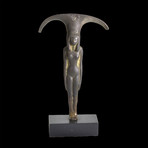
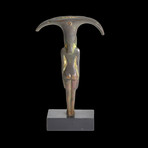
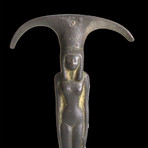
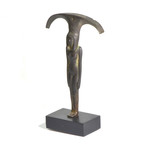
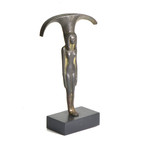


























































 .
.